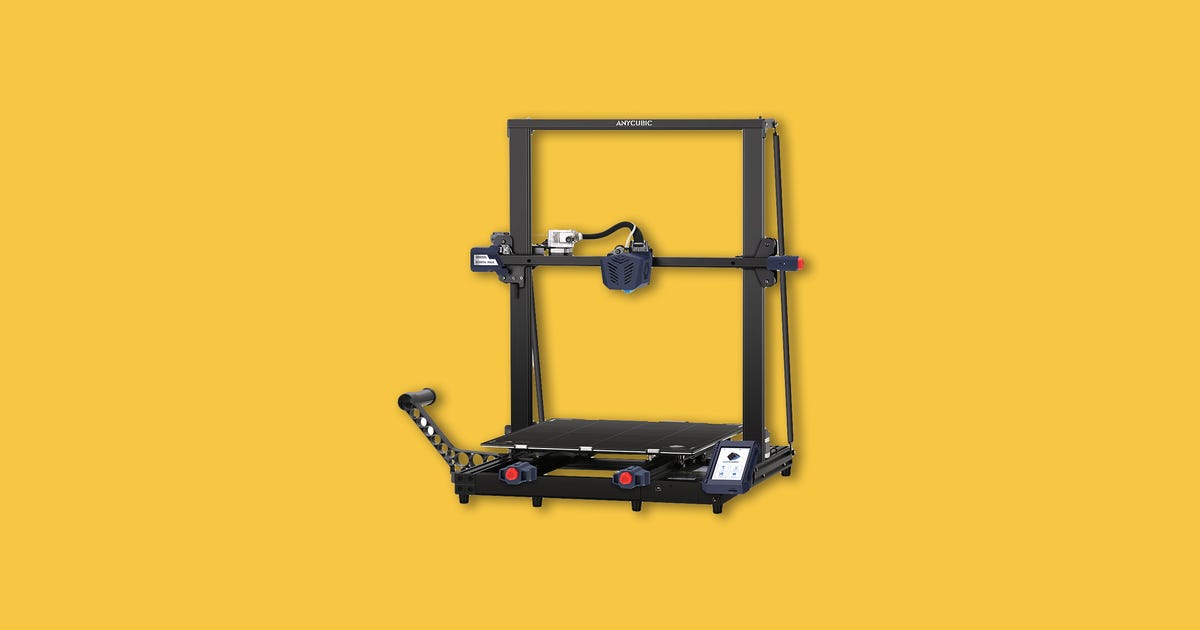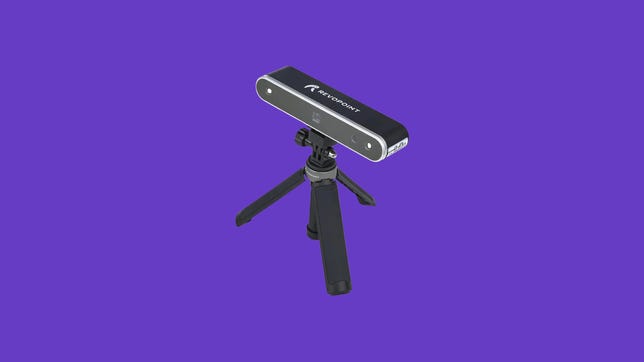Best 3D Printer for 2023: Prusa, Bambu Lab, Anycubic and More
In this article:
In the last few years, 3D printing has become much more commonplace and accessible for hopeful hobbyists. If you like miniatures, figurines or cosplay, 3D printing is an excellent vocation to take on. And there are a ton of great 3D printers, packed with the premium features, that you can get set up and printing with relative ease.
Current 3D printers, which range from affordable (under $300) to high-end (over $4,000), are great gifts for a creative person in your life. Even better, they’re great for you to print objects and craft your own personalized designs if you’re looking to open an Etsy shop or something similar. If you’re looking for some of the best 3D printer options on the market right now, I’ve done an in-depth analysis on 3D printers in all different price ranges from more affordable printer models to the highest cost varieties, to bring you a comprehensive scope on what makes a reliable printer and sound investment.
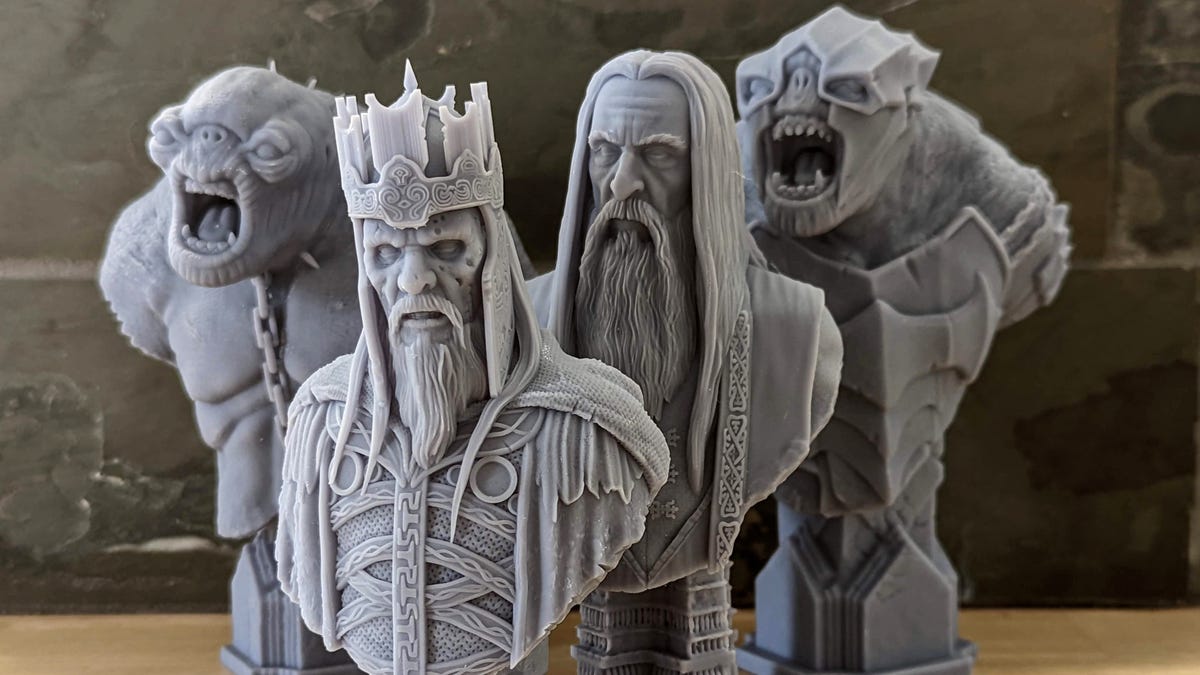
These models by Fotis Mint are extremely detailed.
James Bricknell/CNET
We’ve taken a deep dive into many of the best 3D printers available today. This list includes both small and large 3D printers, with attention paid to print speed, the size of the build plate, the cost of PLA filament, the kind of print head included and other important details. And once you’ve decided to take the plunge into additive manufacturing — that’s what 3D printing essentially is — there’s an FAQ below.
What to consider before buying a 3D printer
Purchasing your first 3D printer can be nerve-wracking but don’t worry; we are here to help. There are a few main areas that you should consider when choosing the best 3D printer, and we have them covered here.
What am I 3D printing?
When deciding on what 3D printer to buy, you first have to know what type of things you want it to print. Resin 3D printing is good for highly detailed models such as character busts, dental work or tabletop miniatures. Even jewelry can be made using a resin 3D printer.
For almost every other application, an FDM, aka filament, 3D printer, is likely the best choice. Filament 3D printing is versatile in the types of material you can use and offers much larger build volumes to work on models. Cosplay armor and helmets, practical parts and large-scale models are best printed on an FDM printer.
Read more: What Is 3D Printing?
What is build volume?
Build volume is the amount of space a printer has to produce a model. Often calculated in millimeters cubed, it is the combination of the width, height and depth that your printer’s nozzle can reach. This is not always the same as the internal volume of a 3D printer because the wiring and other mechanical parts can get in the way of the nozzle, reducing the area available.
Most FDM printers have a build area of around 220 by 220 by 250mm, though some of the best 3D printers have larger and a few of the best budget 3D printers have smaller. I think the 220 by 220mm build plate is a good size for starting out as it has room for large, practical pieces or several smaller models at once.
Should I wait for a deal to buy a 3D printer?
3D printers are often available throughout the year at a discount price. Special days like Prime Day, Black Friday and Cyber Monday are great occasions to pick yourself up a new machine, but there are still plenty of deals to be had on a normal day. Make sure you stay fluid and choose your 3D printer deal based on the availability of the machine and what your research has told you is the best.
Best 3D printers
Bambu Lab
The P1P from Bambu Lab is the type of printer I wish I had owned when I first started out. The quality is excellent, up there in the top three of all the printers on this list, and the speed is staggering. It’s so fast you can print three times faster than almost every other printer on this list.
For $700, the P1P is an absolute no-brainer. It is easy to set up, and while the Wi-Fi sucks, it’s still an amazing piece of engineering.
Read our Bambu Lab P1P review.

James Bricknell/CNET
No best 3D printer list is really complete without the Prusa MK3S Plus. For nearly a decade it has dominated the market and continues to be the go-to printer for anyone looking to make a business from 3D printing. It is fast and creates quality prints every time. I can count the number of print fails from MK3 on one hand, and I have had it for nearly seven years. If you have the $800, you should buy one of these.
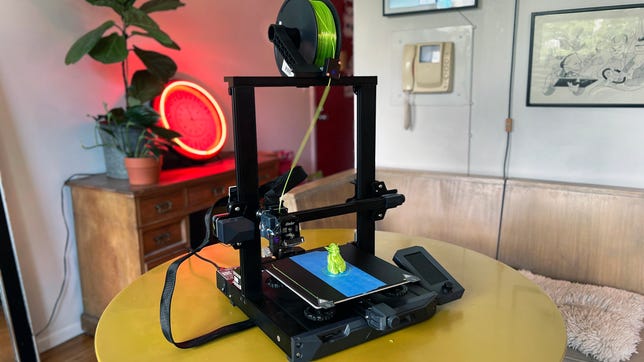
Dan Ackerman/CNET
I’d avoided Ender-3 printers for a long while, because they came in kit form and required many hours of assembly, setup and fine-tuning to use. For just a little more than the kit versions, the newer Ender-3 S1 comes nearly fully preassembled, and with high-end features like a direct drive extruder and self-leveling bed.
Print quality even out-of-the-box was excellent, although a lot of that comes down to having good models to work from. I’d love it to have a touchscreen and Wi-Fi, but apart from those missing features, this is a great way to get polished results from a $400 3D printer.
Read our Creality Ender-3 S1 review.
You’re receiving price alerts for Official Creality Ender 3 S1 3D Printer with Direct Drive Extruder CR Touch Auto Leveling High Precision Double Z-axis Screw Silent Board Printing Size 8.6X8.6X10.6in, Upgrade Ender 3 V2 for Beginners

James Bricknell/CNET
The AnkerMake M5 is a new breed of 3D printer. Its speed is unrivaled on this list and the quality of the end product is on par with anything I’ve seen. When you can get this quality level in a 3D print job in around half the time of its closest competitor, it’s hard to recommend anything else for someone with the money to buy one.
Read our AnkerMake 5 review.
You’re receiving price alerts for Anker – AnkerMake M5 3D Printer – Gray
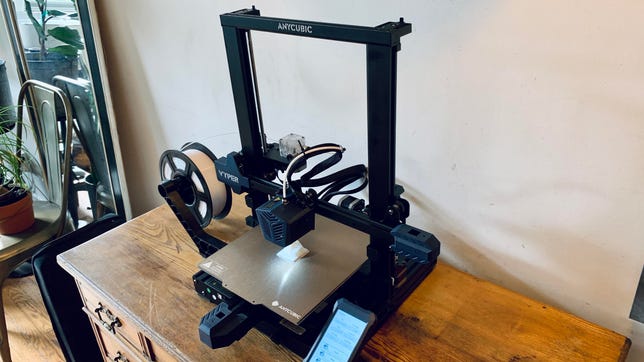
Dan Ackerman/CNET
The Anycubic Vyper FDM printer attempts to be both an affordable 3D printer and easy to use. It’s a tricky needle to thread. Plenty of 3D printers offer automatic bed leveling and calibration to make sure prints come out even and firmly anchored to the print bed. This, however, is the first time I’ve seen a 3D printer run its bed leveling once, with zero manual input from me, and be totally good to go. I printed a 3D test file from the included SD card within minutes of powering on, and I’ve never seen a first print from a 3D printer come out so perfectly.
Read our Anycubic Vyper review.
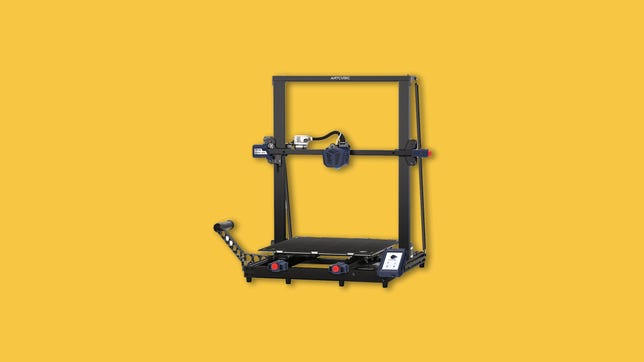
Anycubic
The Anycubic Kobra Max earned a 9 out of 10 in our recent review, in large part because it’s one of the most enjoyable printers I’ve used in years. The build area is large enough to print entire helmets for cosplay, and the auto-bed-leveling system makes setting the machine up a breeze. The Kobra Max is the best choice for a large build area printer, bar none.
Read our Anycubic Kobra Max review.
Best 3D printers for beginners
These 3D printers are excellent for anyone just starting out in 3D printing. Check out our expanded list of the best budget 3D printers for more in this category.

Prusa Research
The Mini Plus is one of the best small-footprint printers you can buy. It has everything you would expect from a Prusa machine: Auto bed leveling, crash detection and great print quality, all for under $450. Building it with my son gave us a lot of good insights into how a 3D printer works, and potentially how to fix one.

Sarah Tew/CNET
Resin printers are the next step up in rapid prototyping design technology when you want your printing to look as high quality as possible. Just be warned: The liquid resin is harder to work with, and it requires both good ventilation and a portable UV light to properly cure. This model is extremely popular with board game hobbyists who want to print pro-looking miniatures, and sometimes you’ll see it fall in price.
Midrange 3D printers
James Bricknell/CNET
The Elegoo Saturn 2 is an almost perfect upgrade from the original Saturn. It is bigger and more powerful, with better quality prints than its predecessor and my No. 1 choice for a midrange resin 3D printer. If you are looking to print serious details or a lot of tiny models, this is simply the best choice.
You’re receiving price alerts for ELEGOO Saturn 2 8K MSLA 3D Printer, UV Resin Photocuring Printer with 10-inch 8K Monochrome LCD, 8.62×4.84×9.84 Inch Larger Printing Size
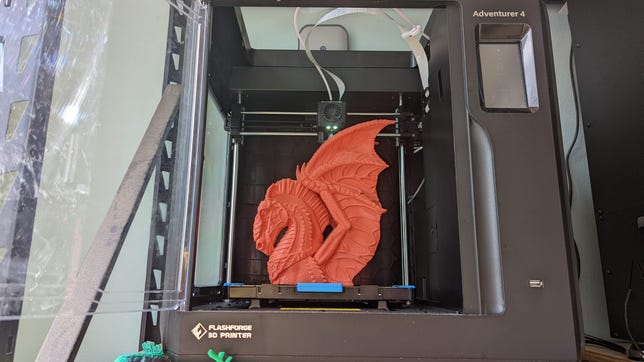
James Bricknell/CNET
The Flashforge Adventurer 3 has long been one of CNET’s favorite midprice 3D printers. The updated Adventurer 4 brings a handful of iterative improvements that make for a winning evolution. The Adventurer 4 is a fully enclosed unit, which helps control the temperature and block drafts. The build area is 220 by 200 by 250mm, and it has a system for easily swapping out nozzles — all good features to have in a mid-level to high-end printer.
You’re receiving price alerts for FLASHFORGE 3D Printer Adventurer 4, Automatic Leveling Removable Nozzle High Temperature, WiFi Cloud Fast Printing, Built-in HD Camera and HEPA13 Air Filter, Enclosed Chamber 220 x 200 x 250 mm
High-end and professional 3D printers
Creality
A word of warning; the CR-30 is not for the beginners out there. It is a complicated machine, and you will need some 3D-printing knowledge to really get the hang of it. It’s also a very different beast, and instead of printing on a static-sized build plate, it uses a conveyor belt to create an “endless Z-axis.” That lets you print very long things or lots of things over and over again.
If you are a cosplayer looking to make weapons or large armor pieces, the CR-30 gives you a lot of room to create. I’ve managed to print Squall’s Gunblade from Final Fantasy VIII as well as the Whisper of the Worm from Destiny 2 (both were printed in two halves and attached together). It’s great for small businesses looking to mass-produce small parts, and with just two CR-30s you could create a small empire on Etsy or Shopify. –James Bricknell
You’re receiving price alerts for Creality CR-30

Sarah Tew/CNET
I can’t begin to tell you how much I love the Glowforge. Laser cutters can create projects from wood, leather, lucite and other materials, making it an interesting creation alternative to filament-based 3D printers. Even better, what would take a 3D printer hours to do takes just minutes in the Glowforge.
With it, I’ve created laser-etched LED lights, birch wood tool caddies, and even a three-tier box for my Nespresso sleeves. There’s a robust community of makers creating and sharing files, but pretty much any line drawing you can create in something like Adobe Illustrator can be turned into a project.
The software is all cloud-based, which adds a layer of complication (you need internet service to use it), but the ability to create amazing gifts and more from simple 0.125-inch or 0.25-inch cheap plywood is pretty empowering.
See some of my laser cutter projects (and download my SVG files) here.
3D scanners
Revopoint
While the software has a pretty steep learning curve, the end result is extremely detailed. I’ve really enjoyed using the handheld version to scan larger models while the included turntable makes scanning smaller objects a breeze. If you are looking for a professional-grade scanner and can spend some time on the software, the Pop 2 is a great choice.
You’re receiving price alerts for Revopoint Pop 2

Sarah Tew/CNET
Recreate pretty much anything by putting it on this 3D scanner, where a rotating base and built-in camera create a 360-degree copy, which is then editable in any 3D program and printable on your 3D printer. Simply scan the object, import the scan into your slicing software for cleanup, and print. The included software alerts you of next steps in the printing process with either sound or texts. Scan quality and print resolution are great, and setup is easy, although you might want to clean up your 3D model a bit in a 3D software app after.
3D printing FAQs
What material should I use to print with?
Which brand of PLA is best?
Generally speaking, Hatchbox has never let me down and runs about $25 for a full 1kg spool on Amazon. Some of the printers I tested only accommodate narrower 0.5kg spools. In those cases, I sometimes used a larger Hatchbox roll with a separate spool-holder. Other times, I had good luck with AIO Robotics 0.5kg spools, which are a little more expensive, at $14 for 0.5kg. Amazon Basics and Monoprice can also be good, but for any brand, weird colors like metallic or glow-in-the-dark filament can be hit-or-miss. Note that a 1kg roll prints a lot of stuff.
What settings should I use?
Most 3D printers include or link to recommended software, which can handle converting 3D STL or other files into formats supported by the printer. Stick with the suggested presets to start, with one exception. I’ve started adding a raft, or bottom layer of filament, to nearly everything I print. It has cut down dramatically on prints that don’t adhere to the bed properly, which is a common issue. If you continue to have problems, rub a standard glue stick on the print bed right before printing.
Your 3D models probably need some help to print properly, as these printers don’t do well with big overhangs — for example, an arm sticking out from a figure. Your 3D printer software can usually automatically calculate and add supports, meaning little stands that hold up all those sticking-out parts of the model. After the print is done, clip the supports off with micro cutters and file down any nubs or rough edges with hobby files.
Where do I find things to print?
Thingiverse.com is a huge online repository of 3D files for anything and everything you can think of. Pokemon chess set? It’s there. Dyson vacuum wall mount? You bet.
When you’re ready to create your own designs, there are a ton of software packages to choose from, but it’s easiest to start with the browser-based free TinkerCad app from Autodesk.
For all the latest world News Click Here

